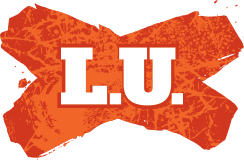$1BN for AFL rights is well over the odds
by: Mark McCraith
From: The Australian
April 25, 2011 12:00AM
NEGOTIATIONS on the rights to screen AFL matches between next year and 2016 have reached their end game, with reports that Channel Seven, Foxtel and Telstra are closing in on a deal.
Last time, Seven, Ten and Foxtel paid $780 million for the five-year contract. This time the magic $1 billion figure is being flaunted by the AFL. The question: are the rights worth that much? The answer: nowhere near.
We don't disagree that sport (and so AFL) should carry a premium. It's undisputed that commercials featured in play lead to higher engagement by viewers.
There's benefit in being attached to an entity that is part of the Australian psyche, and sport is a great aggregator of eyeballs.
That said, the premiums are already high. Far from paying more, we should be looking to pay less..
What we find interesting in these times is that one of our competitors is trying to increase the cost of media by talking up the price the AFL should receive for its broadcasting rights. We all know that any increase free-to-air stations pay for the rights will be passed on to advertisers in the form of higher rates.
The winning bidders will probably be forced to use the AFL as a loss leader because their advertising revenue won't cover the cost of the rights and the broadcasts.
But let's return to this magic figure of $1bn. We believe, through our research, that the rights are worth well south of that. Here's why:
lThere was this thing called the GFC a few years ago. It was good for clients because the price of advertising dropped. TV media is still cheaper than pre-GFC, and so it should be, as the period prior to the GFC brought unrealistic levels of demand, and limited supply forced up prices.
lThe new digital channels. Supply of airtime has tripled, so the market is oversupplied. Laws of supply and demand dictate that media inflation should be zero, or in fact reverse, making the cost of advertising cheaper.
lWe believe AFL TV ratings have peaked. They have remained flat over the past number of years. This is not to say that AFL ratings are bad, in fact they are terrific. However, it is our view that previous growth levels will not be there in the future.
lSeven's Friday night "near live" coverage. This has cost the AFL in Melbourne, where Better Homes & Gardens means the match isn't live. In Perth, Seven's coverage doesn't start until 8.30pm WST, when the game is nearly over in Melbourne. Adelaide is a bit better, but still 1 1/2 hours behind live play. So when Seven talks about a Friday night football franchise, really it is only Melbourne. A national competition deserves national live coverage. Based on our research, we believe this should discount the AFL rights by $30m over five years.
lIn Sydney and Brisbane, how much longer can the Ten Network keep running AFL live? Our research shows that this is costing Ten about $5m each year. The AFL is being given a massive free kick by Ten. So further discount the AFL's asking price by $25m.
lThe new team. Nice, and welcome to the Gold Coast Suns. This could add an additional $45m over the five years. But, by our research, it won't. If anything, it will devalue the games of the Suns until they have a bigger fan base and are more competitive. The Suns are likely to be better value at the next negotiation in 2016, but are probably worth about $10m.
lGreater Western Sydney 2012. Does anyone seriously think that the AFL should receive any money from a broadcaster for covering these games? They should be paying to get coverage. We think the AFL has overestimated the worth of the clubs by $80m.
lBlockbuster scheduling. This is an interesting issue, as the AFL and the broadcasters believe that standout games on a Friday night attract much higher ratings. This is true, but we are talking marginal differences. The AFL would be better off scheduling blockbuster matches at times they can get great crowds and earn more money through gate receipts. The broadcasters are paying far too much for the Friday and Saturday night telecasts -- about $44m too much.
lAnd finally, the bubble. The AFL lives in a bubble called Melbourne. Melbourne newspapers provide excellent coverage, Melbourne TV channels all have a footy property, Melbourne radio devotes extensive airtime and social media kick it all along. It's little wonder the AFL believes its own hype. But in the real world the AFL is just another solid-rating TV program. It's not Packed to the Rafters, it's not MasterChef. It's just very expensive content that takes up about six hours of TV airtime per week.
The AFL rights are worth a good amount of money but nowhere near the proposed $1bn. Based on our analysis, it is closer to $821m, tops.
So at Maxus, we will trade hard with whoever wins the rights, as they will need some money to pay for it, but we put the broadcasters on notice -- we won't be paying an increase.
Mark McCraith is chief operating officer of media buying and analysis company Maxus, part of Group M

